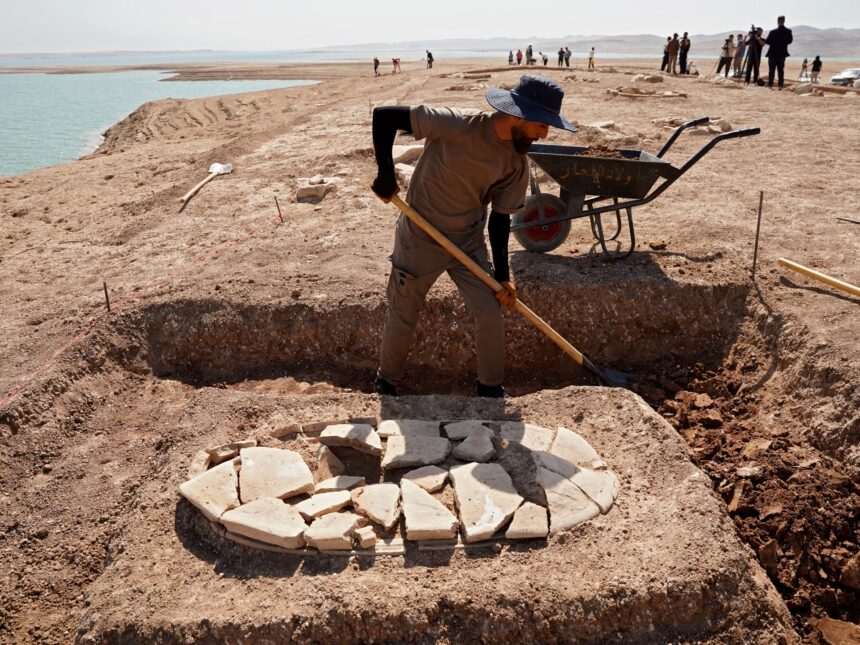The newly discovered tombs that believe in the Hellenistic or Hellenistic-selin period.
Posted on August 31, 2025
Archaeologists in Iraq affected by drought have discovered 40 old tombs after water levels in the country’s largest deposit decreased, according to an antique official.
The tombs, which are believed to be more than 2,300 years old, were unearthed at the edges of the Mosul dam reservoir in the Khanke region of the province of Duhok in the north of the country.
“Until now, we have discovered focused approaches,” said Bekas Brefkany, director of antiquities at Duhok and leader of archaeological work on the site.

His team surveyed the area in 2023, but only saw parts of some tombs. They were able to work on the site only when the water levels fell “to their lowest” this year, Brefkany said.
‘Drought allows us to do excavation work’
In recent years, archaeologists have discovered ruins that date from thousands of years in the same area, as results of drugs that have affected Iraq for five consecutive years.
“Droughts have a significant impact on many aspects, such as agriculture and electricity. But, for us archaeologists … It allows us to do excavation work,” Brefkany said.

The newly discovered tombs that are believed to date from the Hellenistic or Hellenistic-Secular period, according to Brefkany.
He added that his team is working to dig the tombs to transfer them to the Duhok Museum for later study and preservation, before the area is submerged again.
Iraq, which is particularly vulnerable to the effects of climate change, has the leg that faces increasing temperatures, chronic water scarcity and interannual droughts.
The authorities have warned that this year has Bone one of the three of 1933 and that the water reserves were reduced to only 8 percent of their total capacity.
They also blame the ascending dams built in the neighbor Iran and Turkiye for dramatically fusing the flow of the rivers that once were Tigris and Euphrates, who have watered iriq irrigated for millennia.




